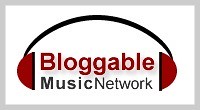One of the most embarrassing events in the history of the Church of Jesus Christ of Latter-day Saints is known as the Kinderhook Plates incident. Although I would never use this in order to embarrass an LDS missionary, it is certainly what seems to be clear evidence against the prophetic and inspired nature of their founder, Joseph Smith, Jr.
One thing that is interesting about this event, is that although the records of this event take up 8 pages of the History of the Church by Joseph Smith, many LDS members do not know anything about them.
Here’s how the account went:
On May 1, 1843, the Mormon Church's own publication, Times and Seasons, reprinted an article which claimed that a "resident in Kinderhook" dreamed "three nights in succession" that in a mound near his home "there were treasures concealed." Ten or twelve men dug into the mound and "found SIX BRASS PLATES." The plates were later brought to Nauvoo. In a letter written from that city, dated May 2, 1843, Charlotte Haven said that when Joshua Moore "showed them to Joseph, the latter said that the figures or writing on them was similar to that in which the Book of Mormon was written, and if Mr. Moore could leave them, he thought that by the help of revelation he would be able to translate them." (Overland Monthly, Dec. 1890, page 630). (Cited)
Joseph Smith went on to pen these words:
"I insert fac-similes of the six brass plates found near Kinderhook, in Pike county, Illinois, on April 23, by Mr. Robert Wiley and others, while excavating a large mound. They found a skeleton about six feet from the surface of the earth, which must have stood nine feet high. The plates were found on the breast of the skeleton and were covered on both sides with ancient characters.
I have translated a portion of them and find they contain the history of the person with whom they were found. He was a descendant of Ham, through the loins of Pharaoh, king of Egypt, and that he received his kingdom from the ruler of heaven and earth." (History of the Church, Vol. 5, p. 372)
So the newly discovered plates were celebrated and partially translated by Joseph Smith. It seems that a great discovery had been made to support the teaching of the LDS church.
However, the tables were about to turn….
Unfortunately for the Mormon position, it was later revealed that the plates were forgeries. On April 25, 1856, W. P. Harris, who was one of the nine witnesses to the discovery of the plates, wrote a letter in which he stated that the plates were not genuine:
"…I was present with a number at or near Kinderhook and helped to dig at the time the plates were found…[I] made an honest affidavit to the same…since that time, Bridge Whitten said to me that he cut and prepared the plates and he…and R. Wiley engraved them themselves…Wilbourn Fugit appeared to be the chief, with R. Wiley and B. Whitten." (The Book of Mormon? , by James D. Bales, pp. 95-96)
At the time of the Civil War the Kinderhook plates were lost. M. Wilford Poulson, a former teacher at B.Y.U. and a student of early Mormon history, found one of the original Kinderhook plates in the Chicago Historical Society Museum, but it was mislabeled as one of the original gold plates of the Book of Mormon. The plate Poulson found has been identified as number 5 in the facsimiles found in the History of the Church. Except for an acid blotch on one side, the plate is in excellent condition. Poulson did a great deal of research concerning the Kinderhook plates and was convinced that they were made in the 1840's as W. Fugate claimed. (Cited)
In 1965, George M. Lawrence, a Mormon physicist, was given permission to examine and make "some non-destructive physical studies of the surviving plate." In his "Report of a Physical Study of the Kinderhook Plate Number 5," Lawrence wrote:
"The dimensions, tolerances, composition and workmanship are consistent with the facilities of an 1843 blacksmith shop and with the fraud stories of the original participants."
Since Lawrence was only allowed to make non-destructive tests, some Mormon scholars would not accept his work as conclusive. In 1980, however, the Mormon scholar Stanley P. Kimball was able "to secure permission from the Chicago Historical Society for the recommended destructive tests." Professor Kimball described the results of the tests in the official Mormon Church publication, Ensign, August 1981, pp. 66-70:
"A recent electronic and chemical analysis of a metal plate…brought in 1843 to the prophet Joseph Smith…appears to solve a previously unanswered question in Church history, helping to further evidence that the plate is what its producers later said it was - a nineteenth-century attempt to lure Joseph Smith into making a translation of ancient-looking characters that had been etched into the plates…As a result of these tests, we concluded that the plate…is not of ancient origin… we concluded that the plate was made from a true brass alloy (copper and zinc) typical of the mid-nineteenth century; whereas the 'brass' of ancient times was actually bronze, an alloy of copper and tin."
For nearly 140 years, the LDS church defended Joseph's partial translation of the Kinderhook plates (in fact there are several pages dedicated to the story of the Kinderhook plates in the 7-volume History of the Church) but as soon as they discovered beyond any reasonable doubt that the Kinderhook plates were fake, they tried to distance themselves from the whole situation by claiming "…there is no evidence that Joseph Smith ever concluded the plates were genuine…"(Ensign , August 1981, pp. 66-70). Apparently a partial translation of them as recorded by Joseph's personal secretary and witnessed by several Mormon Elders was plenty of evidence for the nearly 140 years in which the LDS church defended Joseph's translation of the plates.
Apologists claim that Joseph was not fooled and had no intention of translating the plates. However, if he had not been murdered in June 1844, it is very possible that he would have published a complete "translation" of these bogus plates. Just a month before his death it was reported that he was "busy in translating them. The new work…will be nothing more nor less than a sequel to The Book of Mormon…" (Warsaw Signal, May 22, 1844) The fact that Joseph was actually preparing to print a translation of the plates is verified by a broadside published by the Mormon newspaper, The Nauvoo Neighbor, in June 1843. On this broadside, containing facsimiles of the plates, we find the following:
"The contents of the Plates, together with a Fac-Simile of the same, will be published in the Times and Seasons, as soon as the translation is completed."
In a letter dated April 8, 1878, Wilbur Fugate recalled:
"We understood Jo Smith said [the plates] would make a book of 1200 pages but he would not agree to translate them until they were sent to the Antiquarian society at Philadelphia, France, and England."
On November 15, 1843 Robert Wiley wrote a letter to J. J. Harding suggesting that he was interested in selling the plates to "the National Institute," and that he was also interested in the "opinions of your different Entiquarian friends." In reference to having the plates examined by "the Antiquarian society at Philadelphia, France, and England," Wilbur Fugate stated:
"They were sent and the answer was that there were no such Hyeroglyphics known, and if there ever had been, they had long since passed away. Then Smith began his translation."
The evidence is clear that Joseph did attempt a translation of the Kinderhook plates, and proclaimed them to be authentic ancient records. (Cited)
According to the Encyclopedia of Mormonism (Kinderhook Plates, 2:789,790), interest in the forged plates waned following Smith's death in 1844. "Decades later two of the alleged discoverers announced that the plates were a hoax; an attempt to discredit Smith. By then, however, the Church was headquartered in Utah and little attention was paid to these strange disclosures." The article continues by saying,
"Interest was kindled again in 1920 when the Chicago Historical Society acquired what appeared to be one of the original Kinderhook plates. Later the Chicago plate was subjected to a number of nondestructive tests, with inconclusive results. Then in 1980, the Chicago Historical Society gave permission for destructive tests, which were done at Northwestern University. Examination by a scanning electron microscope, a scanning auger microprobe, and X-ray fluorescence analysis proved conclusively that the plate was one of the Kinderhook six; that it had been engraved, not etched; and that it was of nineteenth-century manufacture. There thus appears no reason to accept the Kinderhook plates as anything but a frontier hoax." (Cited)
For more information, please check out this site and this site for a lot of good information regarding these plates.
In conclusion, it is obvious that this whole ordeal was a huge hoax meant to discredit Joseph Smith…and it worked as far as I am concerned. The problem is that most members of the LDS church have it engrained in their minds that Joseph Smith is a true prophet of God that regardless of anything that might discredit him, that there must be some reasonable explanation that does not bring shame to that name and position. Regardless, the documented facts of this case cannot be denied and if given an honest look, hold no explanation but that which seems obvious to you and me.
Study of the LDS Church - 6.5 The Book of Abraham
Saturday, December 20, 2008
Subscribe to:
Post Comments (Atom)






No comments:
Post a Comment